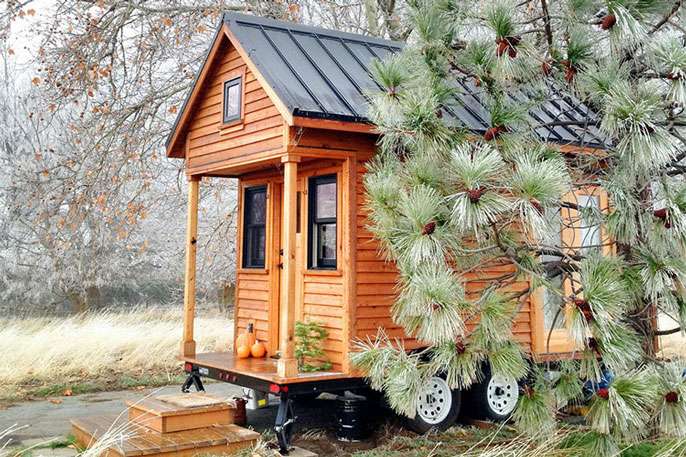The psychology behind the tiny house movement

Tiny homes have recently taken the housing market by storm, appearing all over rural and urban America as an affordable and eco-conscious solution to an increasingly tight housing supply. Generally between 100 and 400 square feet, tiny homes come in all shapes and sizes: From small portable cabins on wheels to trailers to "micro-apartments" that have appeared in San Francisco and New York City.
"I think tiny homes are really interesting because one of the things we've seen, as people design and personalize them, is that their values are reflected in their home space," said Lindsay Graham Ph.D., a research specialist at the Center for the Built Environment at the College of Environmental Design. "What's cool about tiny homes is that the entire space is sort of a broadcast of some sort of value that you hold in relation to homes, sustainability, and how you're living your life."
Graham argues that the motivation behind the tiny house movement likely revolves around a desire to live modestly while conserving resources—environmental consciousness, self-sufficiency, and the desire for a life of adventure are all listed as inspirations for going small. Environmental psychologists reason that homes influence people's emotional state because they "facilitate the social interactions and the power dynamics that are played out in a home," according to a 2015 paper co-written by Graham.
That being said, families or people who are attached to many possessions would likely never follow the tiny house movement. "With choosing tiny homes, I would suspect that it's a certain type of person who is going to be gravitating towards those spaces and it's again the people who have values that they feel are being reflected by living that way," explained Graham. "We try to match our spaces to the activities that we need to accomplish."
While the list of characteristics describing tiny house enthusiasts is distinct, the movement has appealed to a surprisingly broad demographic. Graham compares the carefully thought out, purposeful design of a tiny home to that of a spaceship. Just like NASA is advised by psychologists to understand how the physical space of a shuttle will affect the mindset of astronauts, so should architects work with psychologists to build tiny homes.
"I think that it's very important for psychologists to be involved [in tiny architecture planning]," said Graham. "One of the shortfalls within architecture and the design industry is that they have concepts of what they want to the user to do, or how they want that space to be used, but often there is a big disconnect between what the actual occupants need and the vision of the design team."
More information: L. T. Graham et al. The Psychology of Home Environments: A Call for Research on Residential Space, Perspectives on Psychological Science (2015). DOI: 10.1177/1745691615576761



















